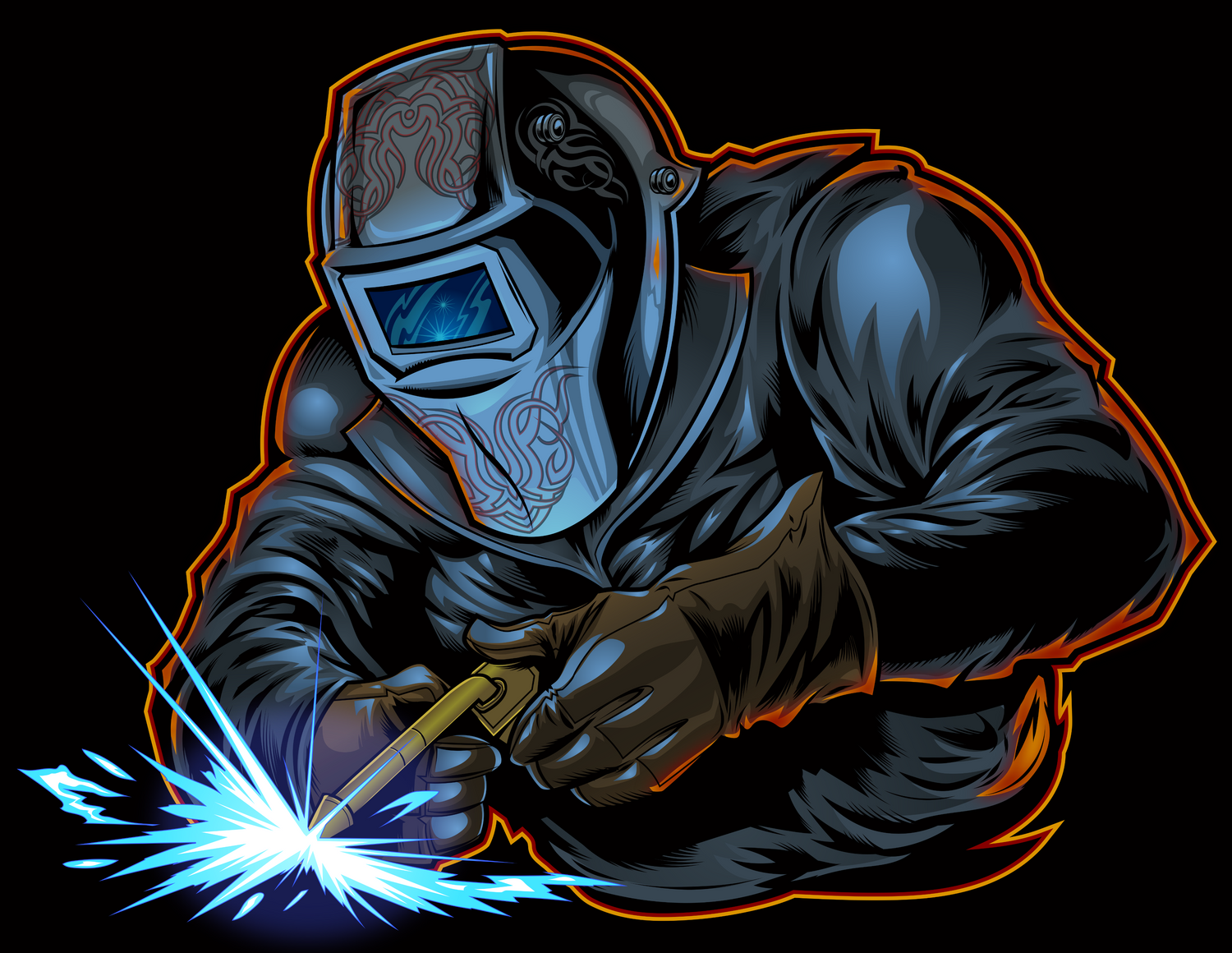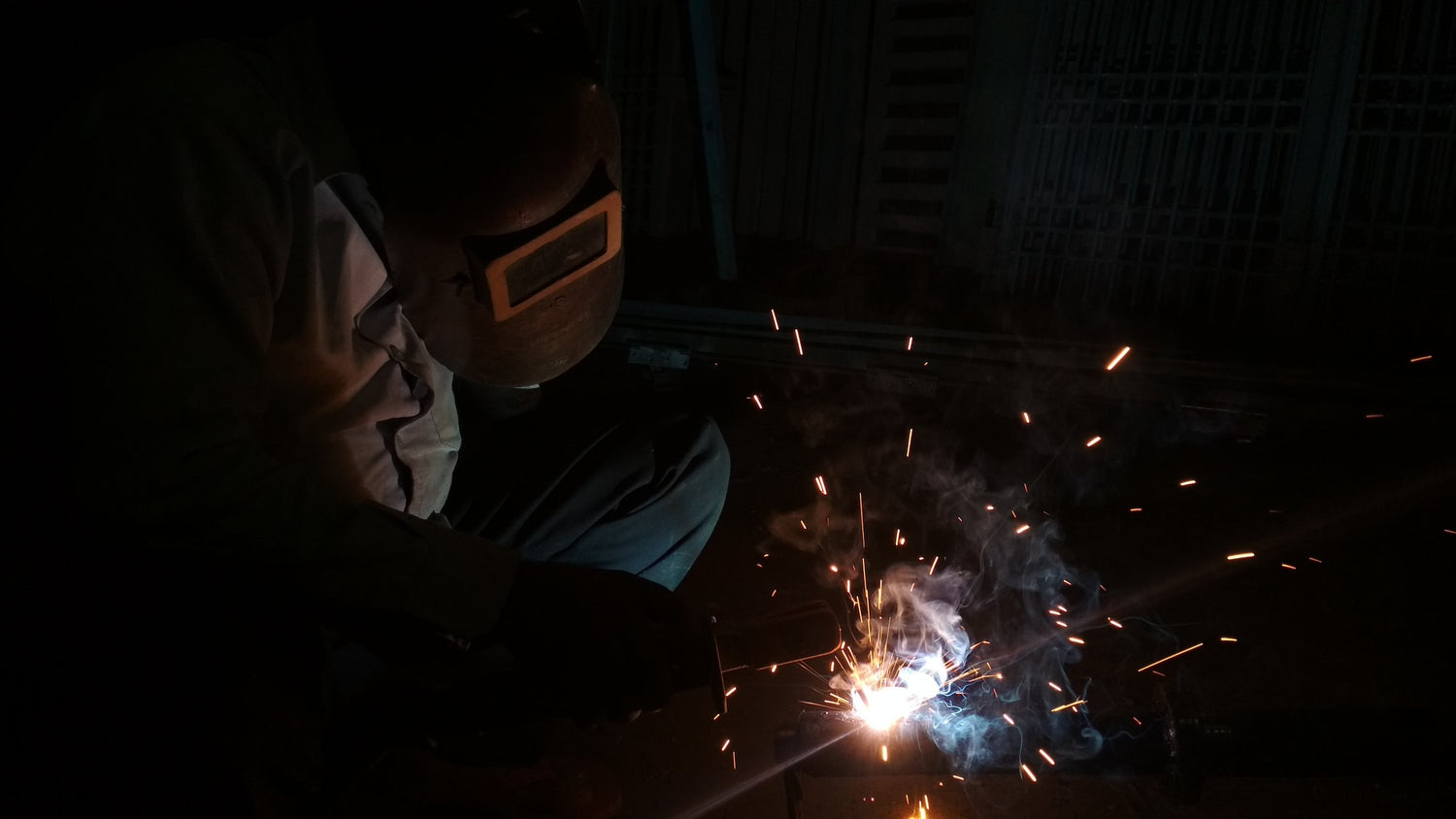
MIG Welding
We are a team of skilled and experienced welders, offering MIG welding services to meet your welding needs. Whether you require welding for personal or commercial purposes, we are here to help!
MIG Welding
Our MIG welding services are designed to provide high-quality welds that meet or exceed industry standards. We use state-of-the-art equipment and top-quality materials to ensure the best possible results. Our team of welders is highly trained and certified to perform MIG welding on a variety of materials, including carbon steel, stainless steel, and aluminium.
We offer a wide range of MIG welding services, including:
- Custom Fabrication: We can fabricate custom parts and structures to meet your unique specifications.
- Repair Services: We can repair damaged metal parts and structures, ensuring they are restored to their original condition.
- Mobile Welding: We offer mobile MIG welding services, allowing us to come to your location to perform the welding job.
At our welding shop, we take safety seriously. We follow all necessary safety protocols to ensure that our welding services are performed in a safe and secure environment. We use the proper protective equipment, such as welding helmets, gloves, and safety glasses, to protect our welders from injury.
We pride ourselves on providing excellent customer service. We work closely with our clients to understand their specific welding needs and provide customized solutions that meet their requirements. We keep our clients informed throughout the welding process, from the initial consultation to the final product.
If you require MIG welding services, look no further than our team of experienced welders. We offer high-quality welding services that meet or exceed industry standards. Contact us today to learn more about our services and to receive a free quote.

MIG Welding
See our Blog post "MIG Welding - Process and Applications" for more information.
Frequently Asked Questions
What is difference between TIG and MIG?
TIG (Tungsten Inert Gas) welding and MIG (Metal Inert Gas) welding are two different welding processes commonly used in the industry. While both processes involve the use of an electric arc to create a weld, they differ in terms of the electrode used, shielding gas, and application. Here's a breakdown of the main differences between TIG and MIG welding:
1. Electrode: In TIG welding, a non-consumable tungsten electrode is used. This electrode does not melt during the welding process and remains constant. On the other hand, MIG welding uses a consumable wire electrode that melts and becomes part of the weld.
2. Shielding Gas: TIG welding uses an inert gas, typically argon, to shield the weld area from atmospheric contamination. The inert gas creates a protective environment that prevents oxidation and maintains the weld's integrity. MIG welding, on the other hand, uses a combination of inert gases (argon or helium) and active gases (carbon dioxide) as a shielding gas. The specific gas mixture depends on the material being welded.
3. Welding Process: TIG welding is a manual process that requires the welder to hold the TIG torch in one hand and a filler rod in the other. The welder controls the heat and the filler metal deposition separately. TIG welding is known for producing high-quality welds and is commonly used for critical applications and materials like stainless steel, aluminium, and titanium.
MIG welding, on the other hand, is a semi-automatic or automatic process. The wire electrode is continuously fed from a spool through a welding gun, which also releases the shielding gas. MIG welding is relatively easier to learn and is often used for general fabrication, automotive repairs, and construction applications. It is suitable for welding a wide range of materials, including carbon steel, stainless steel, and aluminium.
4. Weld Appearance: TIG welding typically produces cleaner and more precise welds with a narrower heat-affected zone. The use of a separate filler rod allows for better control over the weld pool. MIG welding can result in a slightly wider and less visually appealing weld due to the continuous wire feed and the larger heat input.
In summary, TIG welding is a manual process that uses a non-consumable tungsten electrode and inert gas shielding, providing precise control and high-quality welds. MIG welding, on the other hand, is a semi-automatic or automatic process that uses a consumable wire electrode and a combination of inert and active gases for shielding. MIG welding is more versatile and easier to learn, making it suitable for a variety of applications.
Is MIG welding for beginners?
Yes, MIG (Metal Inert Gas) welding is often considered a suitable welding process for beginners. Here are a few reasons why MIG welding is often recommended for those starting out:
1. Ease of Use: MIG welding is generally easier to learn compared to other welding processes. The welding machine's setup and operation are relatively straightforward, making it more accessible for beginners. The continuous wire feed eliminates the need to manually feed filler material, simplifying the process.
2. Forgiving Nature: MIG welding is more forgiving in terms of maintaining a stable arc and producing consistent welds. The use of a wire electrode and the ability to adjust wire speed and voltage settings make it easier to control the weld pool and achieve good results.
3. Versatility: MIG welding is versatile and can be used to weld a wide range of materials, including carbon steel, stainless steel, and aluminium. This versatility makes it suitable for various applications, from automotive repairs and general fabrication to DIY projects.
4. Faster Welding Speed: MIG welding typically allows for faster welding speeds compared to other processes like TIG welding. This can be advantageous for beginners who may not have the same level of patience and experience as more advanced welders.
While MIG welding is considered beginner-friendly, it's still important to receive proper training, practice, and adhere to safety precautions. Welding involves working with high temperatures and electrical currents, so it's essential to understand the equipment, safety procedures, and proper welding techniques to ensure successful and safe welds.
Is MIG welding hard?
MIG (Metal Inert Gas) welding is generally considered one of the easier welding processes to learn and master. While it does require practice and skill development, many beginners find MIG welding less challenging compared to other welding techniques. Here are a few factors that contribute to the perception that MIG welding is relatively easier:
1. Simple Setup: MIG welding machines are typically easier to set up compared to other welding processes. The basic setup involves selecting the appropriate wire, gas, and adjusting the wire speed and voltage settings on the welding machine. Once the machine is properly set up, it becomes a matter of practicing the welding technique.
2. Continuous Wire Feed: In MIG welding, a continuous wire electrode is fed through the welding gun, making the process more convenient and less physically demanding. Unlike processes that require manual feeding of filler rods, MIG welding allows the welder to focus primarily on controlling the welding gun and maintaining a steady arc.
3. Welding Speed: MIG welding generally allows for faster welding speeds compared to processes like TIG welding. The ability to deposit a larger volume of weld metal in a shorter amount of time can be beneficial for beginners who may not have the same level of experience and patience as more advanced welders.
4. Versatility: MIG welding is versatile and can be used to weld various materials, including carbon steel, stainless steel, and aluminium. This versatility makes it suitable for a wide range of applications, from automotive repairs to DIY projects, allowing beginners to practice on different materials and gain experience.
While MIG welding is considered relatively easier, it's important to note that proper training, practice, and safety precautions are still essential. Understanding welding fundamentals, equipment operation, and safety procedures will contribute to successful and safe welding outcomes. With practice and experience, beginners can develop their skills and become proficient in MIG welding.
Is TIG stronger than MIG?
In terms of the strength of the weld itself, there is no inherent difference between TIG (Tungsten Inert Gas) welding and MIG (Metal Inert Gas) welding. The strength of the weld primarily depends on factors such as the welding technique, proper preparation, material selection, and the skill of the welder rather than the welding process itself.
Both TIG and MIG welding processes, when performed correctly, can produce high-quality and strong welds. The strength of the weld depends on factors such as the penetration depth, filler metal selection, and the ability to create a sound fusion between the base metals.
However, it's worth noting that TIG welding is often considered more suitable for critical applications or welding certain materials where high-quality and precise welds are required. TIG welding allows for better control over the welding process, resulting in cleaner and more precise welds. This level of control can contribute to stronger welds in terms of appearance and potential resistance to cracking or failure in certain circumstances.
On the other hand, MIG welding is known for its efficiency and speed. It is commonly used for general fabrication and construction applications, where the focus is often on productivity rather than the utmost precision. While MIG welding may not provide the same level of control and precision as TIG welding, it can still produce strong and reliable welds for many applications.
In summary, both TIG and MIG welding processes can create strong welds when performed correctly. The strength of the weld depends on various factors, including the welding technique, preparation, materials, and the skill of the welder. TIG welding is often favoured for critical applications where precise and high-quality welds are required, while MIG welding is valued for its efficiency and productivity in general fabrication and construction.

Contact us
For all enquiries from small to bespoke, please fill out the contact form below or feel free to give us a call.
We look forward to hearing from you.
